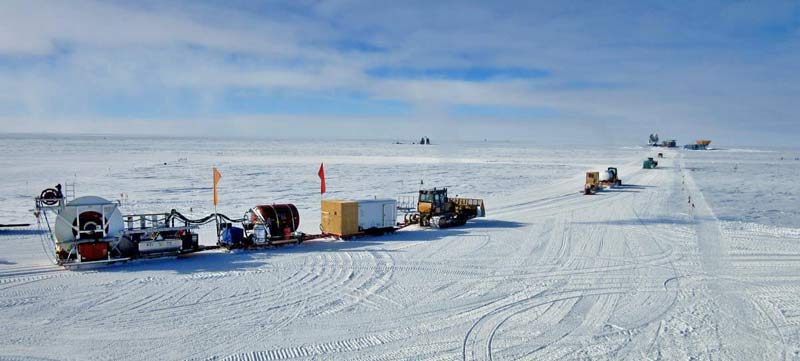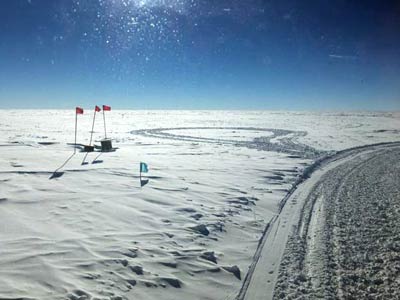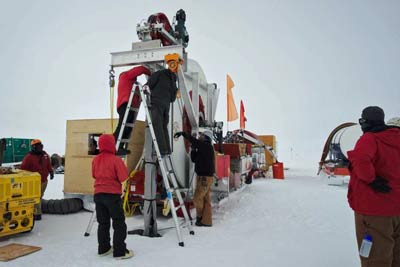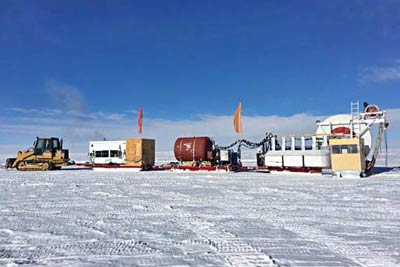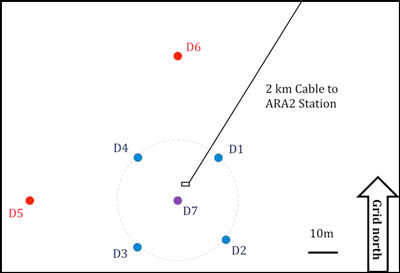2017-18 Photos--Expanding ARA
...the Askaryan Radio Array
|
The project is an adjunct to the IceCube project, with a similar collaboration group led by the University of Wisconsin. The goal is to detect higher-energy neutrinos than the ones sought by IceCube, using horizontally and vertically polarized radio antennas buried in 200m holes in the ice. The ultimate plan is for 37 stations, spaced 2km apart, covering a hexagonal pattern of about 100 sq km. After two seasons of testing in 2010-11 and 2011-12, the first three sites were deployed in 2012-13 (these links are to my coverage with links to detailed references). The project received no further development funding until the 2017-18 season, when plans were made to rehab and repair the first 3 sites and establish 3 more. | |
 A layout of the existing and planned ARA project. Sites 1, 2, and 3 were installed in 2012-13, and the original plan for 2017-18 was to install sites 4, 5, and 6. After the late arrival of the team, the priority was changed to sites 6, 4, and 5. These two diagrams are from reference (1). |
|
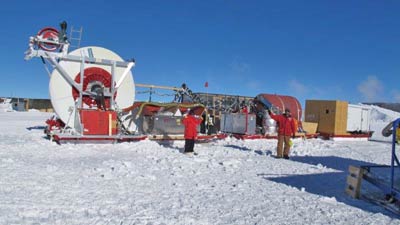 Some of the ARA equipment staged shortly after the first team members arrived. Among other things, the drill sled would get a new hose (JR). The arrival of the team and their cargo was delayed about 2 weeks, until the end of November (2). |
|
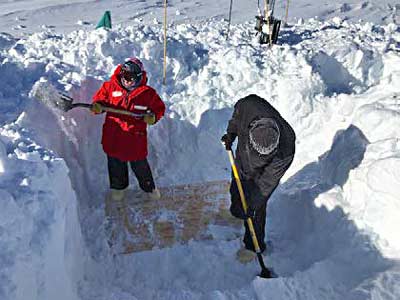 Sally Robertson and Thomas Meures digging out a failed electronics box at the site of wind turbine #3 (WT3) which is central to sites 1, 2, and 3. There was lots of digging out, troubleshooting, and replacing power, electronics, and data acquisition (DAQ) boxes (JK) (2). |
 After the drilling equipment moved out (photo at top of page) the first hole was completed at ARA6 by 18 December. The drilling is done in two stages--a "carrot" hot glycol drill is used for the first 40m through the firn, and the remaining 160m is drilled using a hot water drill system. Here's the firn portion of the first hole (2). |
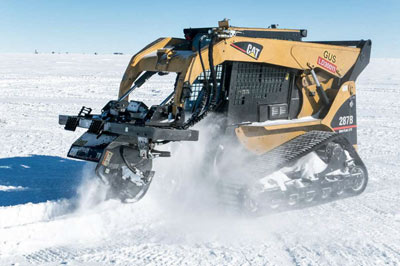 After Christmas, the team then moved to the ARA4 site. Here too there was much cable trenching required. Note how far away the dark sector buildings and the station are in the distance (JW) (3). |
|
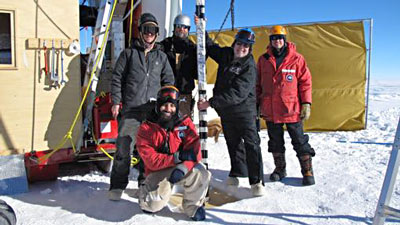 A hero shot as the last ARA4 string is deployed--James Roth, Rob Young, Chris Gibson, Ryan Kunz (an ASC carpenter who assisted the project), and Uzair Latif. (2). |
 A closeup of the autographs and other graffiti on the final string (2). Most of the team left Pole on 5 January, and there were a few tasks ultimately left behind for the IceCube winterovers Raffaela Busse and Johannes Werthebach. The final stats on ARA4: 5 holes drilled--4 detector strings and one calpulser calibration string. And for various reasons including the deployed hardware, at the end of the season ARA6 was renamed as ARA5. |
|
Photo credits where identified: Leah Street (LS), James Roth (JR), John Kelley (JK), Raffaela Busse (RB), and Johannes Werthebach (JW) Next...over in the dark sector, a major expansion of the ARA project was underway. Other references: (1) Brian Clark: The Askaryan Radio Array: Current Status and Future Plans, a presentation at The Ohio State University on 11 August 2017. (2) Various ARA 2017-18 status reports, provided with assistance by Michael DuVernois. (3) Various IceCube weekly status reports, written by the 2018 winterovers Raffaela Busse (RB), and Johannes Werthebach. (4) A. G. Vieregg, K. Bechtol, and A. Romero-Wolf: A Technique for Detection of PeV Neutrinos Using a Phased Radio Array, 7 January 2016. | |
